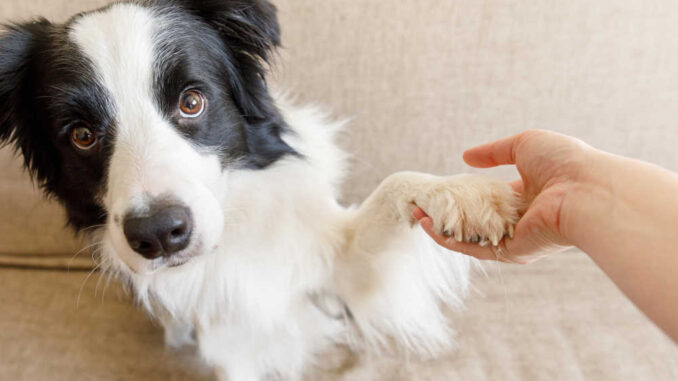
This article was updated on January 10th, 2024
If you’ve noticed a new white bump or lump on your dog’s paw you’re probably wondering what’s causing it. White bumps on dogs’ paws are less common than other types so it can be tricky to work out the likely cause. As a vet, here are some of the most common causes of white bumps on a dog’s paw.
What are the top reasons for white bumps on a dog’s paw?
1. Infections (white bumps or pustules)
Skin infections can occur anywhere, including the paws, and can cause a couple of different white ‘bumps’. If your dog has a bacterial skin infection (pyoderma) affecting the area you may see one or several small white pustules.
Usually, though not always, you’ll also notice your dog licking or chewing the area and more diffuse redness or inflammation due to the infection. If bacteria have entered through a small wound or with foreign material like a thorn or grass seed, you may instead see a larger white bump: an abscess. These are also usually painful, especially if pressure is applied.
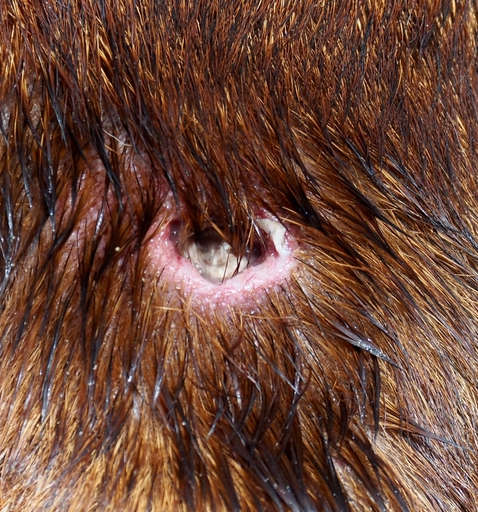
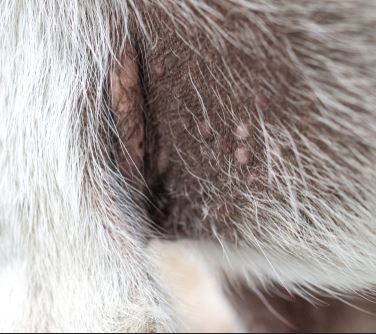
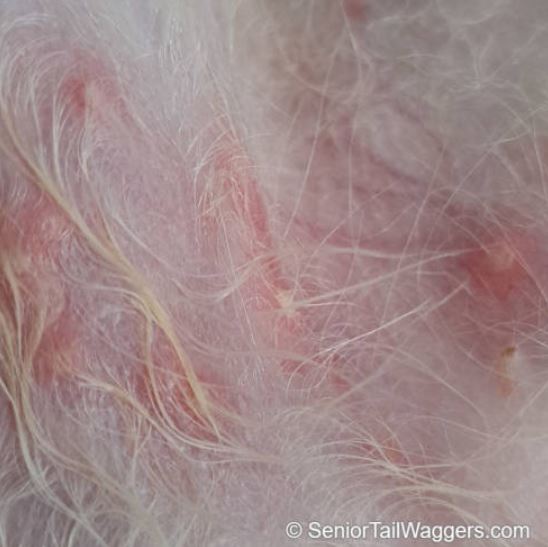
Infections are a common cause of skin problems in dogs and while some low-grade infections or isolated pustules may settle on their own, it’s worth getting your dog checked by a vet. Treatment may include antibiotics, pain relief or even surgery if a foreign body is suspected. Saltwater bathing or soaking may also help. The prognosis is generally very good with veterinary treatment.
Learn more about skin infections.
2. Cysts
Cysts are another common cause of white, usually painless bumps in the skin. They’re accumulations of fluid or thicker oily material that originate from glands in the skin or pads.
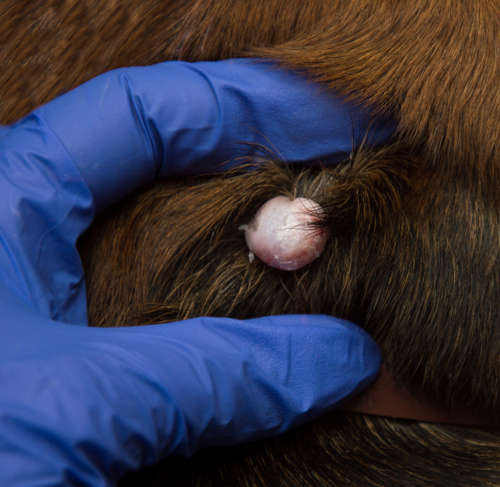
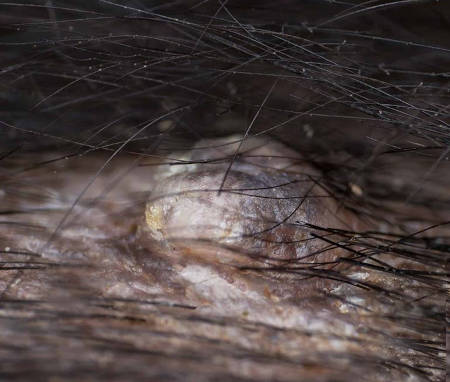
White cysts may continue to grow larger with time or remain the same size but are typically benign and don’t require treatment. One exception to this is interdigital cysts on paws which usually cause substantial inflammation and irritation and do require veterinary treatment.
Learn more about cysts often found on a dog’s paw.
3. Corns (keratomas)
These hard, thickened circular white bumps on dogs’ pads are most common in sighthounds and develop due to abnormal pressure or trauma (e.g. rough surfaces) causing the pad to thicken. The overgrowth of keratin-producing cells in a focal area is usually slowly progressive and can cause discomfort and even lameness. Treatment can be tricky so it’s worth discussing options with your vet; pain relief and surgical excision are common options. Avoiding rough and hard surfaces can also help.
Photo – e.g. https://lynbrookvet.com.au/greyhound-corns/
4. Tumors
If you notice any new white lump on your dogs’ feet it’s worth checking with your vet to rule out a cancerous tumor. There are numerous different kinds of growth that can occur on the feet and while some are benign (non-cancerous) it’s important to rule out any malignant, cancerous causes. If the lump is growing rapidly or causing irritation, it’s even more important for it to be assessed.
Your vet will usually recommend a fine needle aspirate for diagnosis if the lump is large enough to sample. Learn more about lumps often found on dog paws.
5. Warts (papillomas)
These are common around the mouths and paws of young dogs and are caused by papillomaviruses. They’re usually fleshy and can vary in color (from white-pink to black) but are commonly pale pink or pale tan.
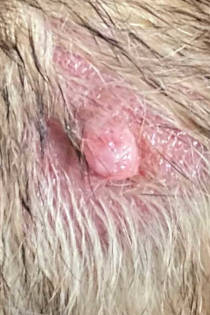
Pictured below is a white wart bump on a dog’s tongue:
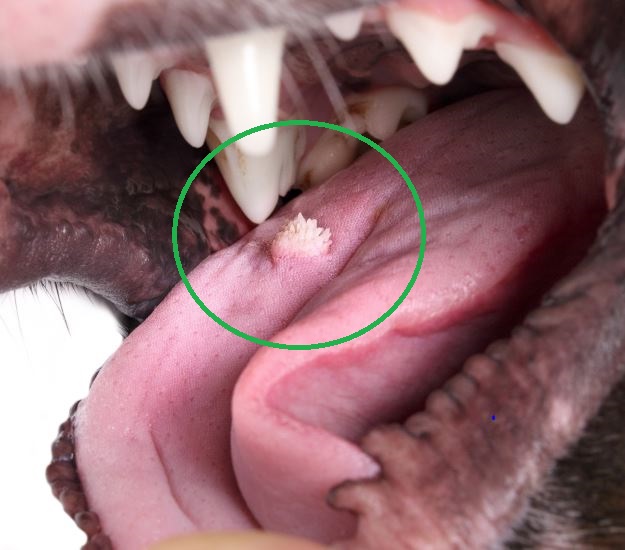
Warts usually resolve over weeks to months but should be checked by your vet to rule out other causes and discuss management if they begin to cause irritation. Read more about warts.
6. Ticks
Ticks are common in many areas and can latch on to any part of your dog. The mouthparts are often so embedded that only the white, spherical body is visible, as shown in the picture below.

To identify a tick, look closely at skin level to identify the black legs – it’s important not to mistakenly try to remove a skin lump that isn’t a tick. Ticks should always be removed, using a twisting technique to avoid leaving mouthparts embedded. If you’re unsure, your vet will be able to help with this.
White paw bumps should be checked by a veterinarian, in particular when they cause pain or irritation
Any new bump or lump on your dog’s paw should be checked by your vet to rule out conditions requiring treatment, including:
- infections,
- abscesses and
- malignant tumors.
However, if the lump is not causing any irritation and is very small (e.g. a couple of millimeters), monitoring it for a couple of weeks may help to determine if it is progressing and improve the chance of a diagnosis, as very small lumps can be difficult to sample. Take high-quality, clear photos showing a closeup of the lump with an object like a ruler or coin for scale.
If your dog is showing signs of pain, the surrounding skin appears inflamed, the lump is growing rapidly or you suspect something like a foreign body, you should see your vet more urgently.
What will happen at the vet
Many types of lump can be diagnosed based on visual examination and history. To investigate further your vet may recommend a fine needle aspirate to view a sample of cells under the microscope, usually costing $150-200.
In some cases, a larger biopsy of a lump or surgery to flush and explore an abscess may be required under sedation or anaesthetic, costing approximately $400-800 depending on the procedure.
Disclaimer: This website's content is not a substitute for veterinary care. Always consult with your veterinarian for healthcare decisions. Read More.


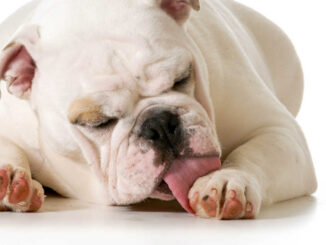
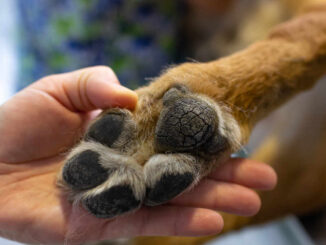

Be the first to comment